Growing mangroves at home can be a rewarding experience, especially for those passionate about maintaining healthy ecosystems in their aquariums or adding unique plants to their home environments. These fascinating plants, known for their resilience and vital role in coastal ecosystems, can also thrive in a home setting. But, is it really possible? The short answer is yes—but like all plants, they require specific care to flourish.
What Are Mangroves?
Mangroves are a group of trees and shrubs that thrive in coastal intertidal zones. These plants are specially adapted to live in harsh conditions where saltwater, low oxygen levels, and shifting sediments would make survival difficult for most plants. Their unique root systems allow them to anchor themselves firmly while filtering salt from the water they absorb.
Why Grow Mangroves at Home?
For many aquarium enthusiasts and hobbyists, growing mangroves at home offers several benefits. Not only do these plants add aesthetic value to your home, but they also serve as natural filters for aquariums, helping to maintain aquarium water quality by absorbing nutrients and other elements that could otherwise lead to algae growth.
Pros of Growing Mangroves at Home:
✔️ Natural Water Filtration: Mangroves absorb excess nutrients and pollutants from water, making them excellent natural filters for aquariums.
✔️ Unique Aesthetic Appeal: With their distinct root systems and lush green leaves, mangroves add a touch of the wild to your home or aquarium setup.
✔️ Environmental Impact: By growing mangroves, you’re contributing to the conservation of a vital plant species that plays a crucial role in coastal ecosystems.
Cons of Growing Mangroves at Home:
❌ Space Requirements: Mangroves need ample space, especially for their roots, which can extend significantly as they grow.
❌ Specialized Care: These plants require specific conditions, such as proper lighting, water quality, and salinity levels, which may be challenging for beginners.
How to Start Growing Mangroves at Home
Choosing the Right Mangrove Species
When it comes to growing mangroves at home, one of the first steps is selecting the right species. Red mangroves (Rhizophora mangle) are a popular choice among aquarium enthusiasts due to their adaptability and aesthetic appeal. They can thrive in saltwater, freshwater, or brackish environments, making them versatile options for various setups.
🔻 Fun Fact: Mangroves can filter out up to 90% of the salt from the seawater they absorb, making them incredibly resilient in saline environments. 🚫
Setting Up Your Mangrove
To successfully grow mangroves at home, you need to replicate their natural environment as closely as possible. Here are some key factors to consider:
Water Quality
Mangroves are highly adaptable, but they thrive best in brackish water – a mix of saltwater and freshwater. If you’re growing them in an aquarium, maintaining the right salinity level is crucial.
Light Requirements
Mangroves require ample light to photosynthesize and grow. If you’re keeping them in an aquarium, ensure they have access to a strong light source, ideally one that mimics natural sunlight.
Substrate and Root Space
Mangroves have extensive root systems that require room to grow. Use a soft substrate like sand or mud, which allows the roots to anchor firmly while still allowing for water movement.
🔻 Mangrove Fact: Mangroves can grow up to 2 feet per year under optimal conditions, although their growth rate can vary based on environmental factors. 🚫
Common Challenges and How to Overcome Them
Yellowing Leaves
One of the most common issues people encounter when growing mangroves is yellowing leaves. This can indicate several problems, including nutrient deficiencies, improper lighting, or water quality issues.
Good vs. Bad Lighting:
✔️ Good: Providing a full-spectrum light that mimics natural sunlight helps mangroves thrive.
❌ Bad: Using weak or insufficient lighting can lead to poor growth and yellowing leaves.
Root Rot
Another potential challenge is root rot, which occurs when the roots are submerged for too long without proper oxygenation. Mangroves need to have a portion of their roots exposed to air, mimicking their natural environment where tides provide regular oxygenation.
Good vs. Bad Root Care:
✔️ Good: Ensure your mangroves have a mix of submerged and exposed roots to promote healthy growth.
❌ Bad: Keeping roots fully submerged without adequate aeration can lead to root rot and plant death.
Space Constraints
Given their extensive root systems, mangroves require ample space to grow. If they’re confined to a small tank or pot, they might become stunted.
Good vs. Bad Space Management:
✔️ Good: Provide sufficient space for root expansion, even if it means upgrading to a larger tank or container as your mangroves grow.
❌ Bad: Keeping mangroves in a cramped environment can lead to poor growth and health issues.
Personal Experience: Growing Mangroves at Home
When I first started growing mangroves at home, I was fascinated by their ability to thrive in different environments. I remember setting up my first tank and watching as the mangroves began to take root. It wasn’t without its challenges—there were moments when I had to adjust the lighting and salinity levels to keep the plants healthy. But with each adjustment, I learned more about what these resilient plants need to thrive. Today, my mangroves are flourishing, and they’ve become a central feature in my aquarium setup.
🔻 Fun Fact: Mangroves are known as “rainforests of the sea” because they provide a habitat for a wide range of marine life, from fish to crabs and even birds. 🚫
Conclusion: Is Growing Mangroves at Home Worth It?
Growing mangroves at home can be a rewarding experience, but it requires careful attention to detail and a willingness to adapt to the plant’s needs. While they may not be the easiest plants to grow, their unique benefits—such as natural water filtration and environmental impact—make them a valuable addition to any home or aquarium.
At Save Mangroves Nursery, we offer healthy Live Red Mangrove Plants that are ready to add to and naturally filter your Saltwater, Freshwater, or Brackish Aquarium tanks. We ship out to all 50 states daily, ensuring that your mangroves arrive healthy and ready to thrive.
Whether you’re a seasoned aquarium enthusiast or a beginner looking to add something unique to your home, mangroves can offer a fascinating glimpse into the resilience of nature. With the right care, you can grow these incredible plants at home and contribute to the conservation of a vital species.
Best seller products
-
18”-24” Red Mangroves With Roots & 2-4 Leaves
Price range: $34.99 through $87.99 -
10”-14” Red Mangroves With Roots & 2-4 Leaves
Price range: $19.99 through $47.99 -
28″ Red Mangrove Tree – Fully Mature Plant
Price range: $0.00 through $230.00 -
[RARE] Orange Oriental Mangroves Propagule Seeds
Price range: $19.99 through $79.99 -
30″ Red Mangrove Tree – Fully Mature Plant
Price range: $0.00 through $180.00 -
Red & Oriental Mangrove Combo Bundle
Price range: $29.99 through $44.99
 Cart is empty
Cart is empty 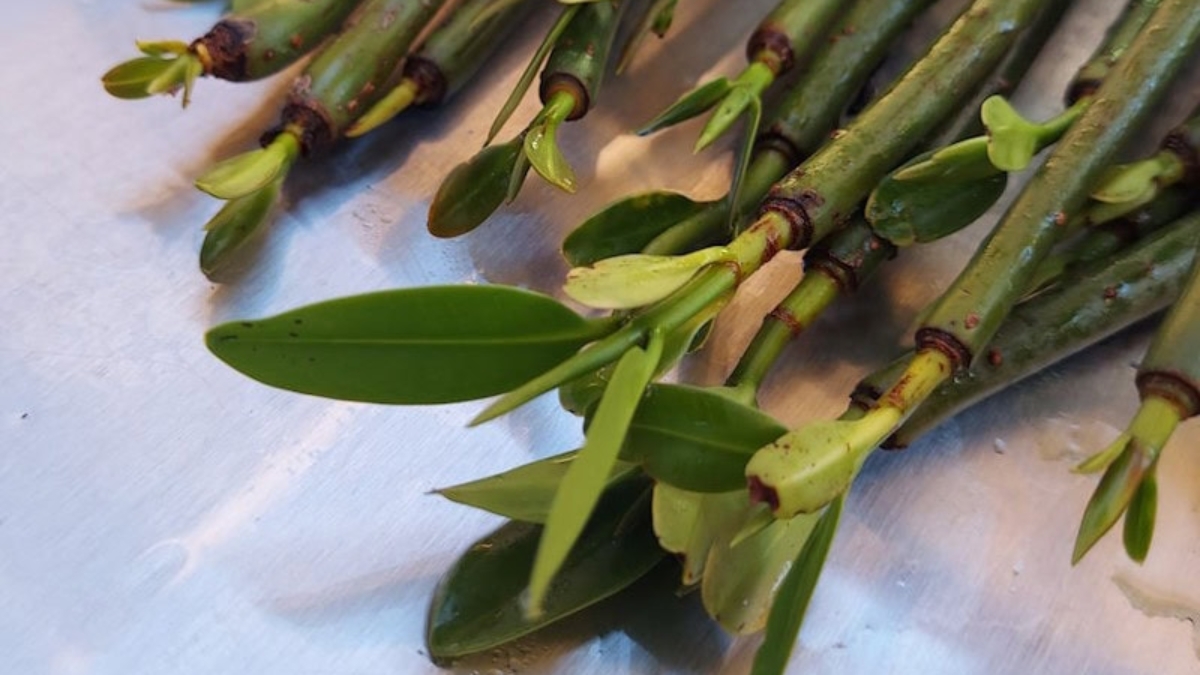

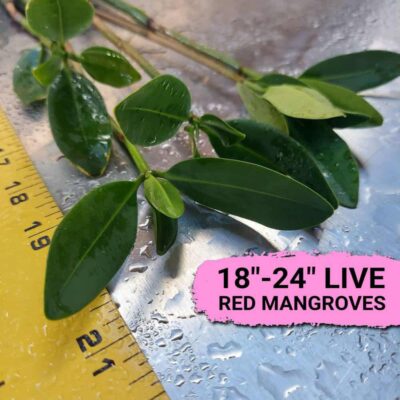
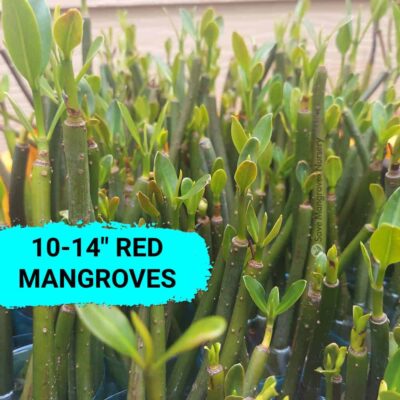

![[RARE] Orange Oriental Mangroves Propagule Seeds](https://savemangroves.com/wp-content/uploads/2025/07/Oriental-Mangrove-Seeds-Save-Mangroves-Nursery-400x400.jpg)
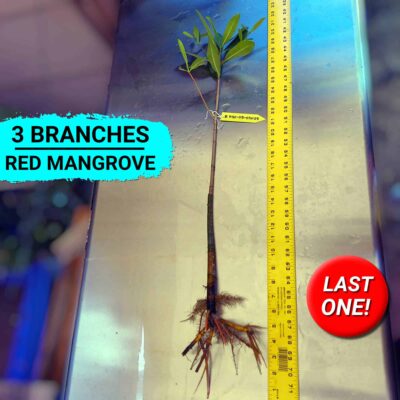
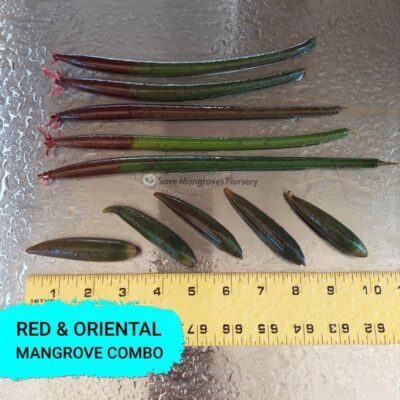
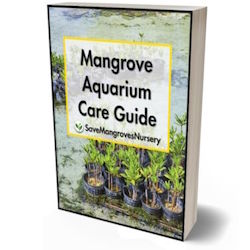
Add a Comment
You must be logged in to post a comment